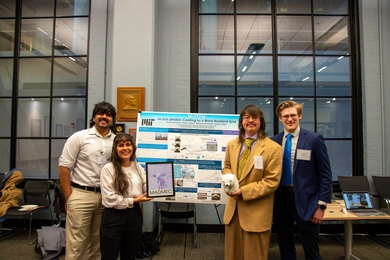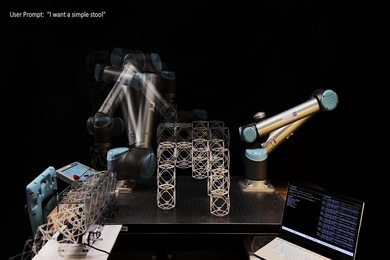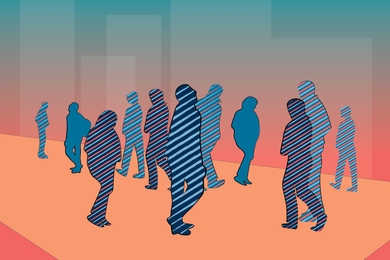MIT alumnus George F. Smoot has been awarded the 2006 Nobel Prize in physics, together with John C. Mather, for work that looks back into the infancy of the universe and attempts to gain some understanding of the origin of galaxies and stars.
The work, based on measurements of the cosmic microwave background radiation made with NASA's COBE satellite, provides increased support for the big-bang theory of the origin of the universe. The COBE (Cosmic Background Explorer) measurements also mark the inception of cosmology as a precise science. For the first time, cosmological calculations could be compared with data from real measurements.
According to the big bang scenario, the cosmic microwave background radiation is a relic of the earliest phase of the universe. Immediately after the big bang itself, the universe can be compared to a glowing body emitting radiation at a temperature of almost 3,000 degrees Celsius.
Since then, the radiation has cooled as the universe has expanded. The background radiation we can measure today corresponds to a temperature that is barely 2.7 degrees above absolute zero. The new Nobel laureates were able to calculate this temperature thanks to the COBE measurements.
COBE also had the task of seeking small variations of temperature in the cosmic background radiation in different directions. Extremely small differences of this kind--in the range of a hundred-thousandth of a degree--offer an important clue to how the galaxies came into being. The variations in temperature measured by COBE show us how the matter in the universe began to "aggregate." This was necessary if the galaxies, stars and ultimately life forms like us were to be able to develop.
Smoot received B.S. degrees in mathematics and in physics in 1966 from MIT. He also received the Ph.D. in physics in 1970 from the Institute working with the late Professor David Frisch, who was on the MIT faculty for some 40 years. Smoot is currently a professor at the University of California at Berkeley. Co-winner Mather is currently at NASA's Goddard Space Flight Center.
George Smoot is a distant relative of another Smoot in MIT lore. In 1958 that Smoot, Oliver R., was rolled head over heels by his fraternity brothers across the Harvard Bridge to measure the span in body lengths. That distance was found to be exactly 364.4 smoots plus an ear.
The stunt became so famous that the new Nobel laureate was often confused with his predecessor. George Smoot wrote about the experience in a short digest on the web.
A version of this article appeared in MIT Tech Talk on October 4, 2006 (download PDF).






